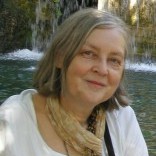Climate Change
Ed Meek
You woke me up to talk again
about the need to move
when our cat, Isis,
proud as a peacock,
presented us
with a purple finch
she must’ve caught
outside the window
of our cottage on the coast.
She leapt onto the bed
and dropped her gift
between the white silk sheets.
The bird was as stiff
as a homeless drunk in winter.
Isis returned to her perch on the ledge
and purred with the satisfaction
of a job well done,
while the finch, to our delight,
popped up to its feet,
took to the air and flew out the window.
Was it stunned or playing possum? I wondered.
We have to talk, you said
as I rolled back over feigning sleep.
Read more »
about the need to move
when our cat, Isis,
proud as a peacock,
presented us
with a purple finch
she must’ve caught
outside the window
of our cottage on the coast.
She leapt onto the bed
and dropped her gift
between the white silk sheets.
The bird was as stiff
as a homeless drunk in winter.
Isis returned to her perch on the ledge
and purred with the satisfaction
of a job well done,
while the finch, to our delight,
popped up to its feet,
took to the air and flew out the window.
Was it stunned or playing possum? I wondered.
We have to talk, you said
as I rolled back over feigning sleep.

















